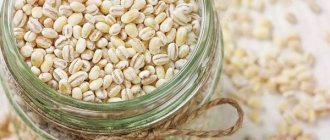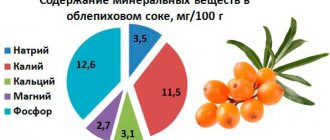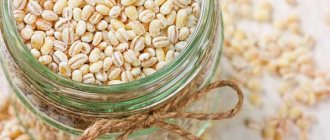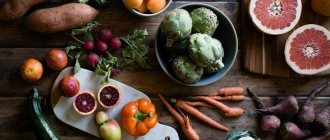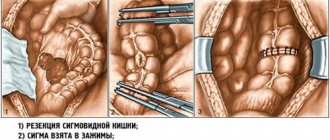You probably already know that foods containing fiber (dietary fiber) are good for your health. According to WHO recommendations, the daily fiber intake for adults is 25-30 g - approximately the same amount of fiber contained in 400 g of vegetables and fruits. But according to statistics, the majority of the population receives only half of the WHO recommended amount of fiber per day. The reason for this is the Western style of eating with a predominance of refined foods. From our article you can learn more about the beneficial properties of fiber and simple ways to use it every day.
Fiber (dietary fiber) are substances of various chemical natures of plant origin that cannot be broken down and digested by the enzymes of our body and are used to feed bacteria living in the intestines. Therefore, dietary fiber is classified as prebiotics - substances that help maintain normal intestinal microflora and its biological activity.
General information about constipation
Constipation or constipation is a very common bowel movement disorder that makes it difficult to have bowel movements.
Individual episodes are often associated with dietary errors or functional disorders, while chronic constipation often indicates diseases of the gastrointestinal tract or other organs and systems. The key symptoms of constipation are:
- Defecation less than 3 times a week.
- Passage of dry, hard stool, which often looks like separate lumps.
- The need for additional straining to defecate.
- A feeling of “blockage” in the rectum.
- Feeling of incomplete bowel movement.
- The need for assistance with defecation (hand pressure on the abdomen and manual manipulation to remove stool from the rectum).
What foods contain fiber?
Fiber is found in foods of plant origin: fruits, berries, vegetables, cereals, grains, legumes, nuts and seeds. We tell you about different groups of products with fiber.
How to find out how much fiber a product contains? On imported packaging, look for the designation Dietary fiber or simply Fiber. On locally produced products, the amount of fiber is indicated less frequently.
Typically, information is given about the carbohydrate content in general. And how much of it is dietary fiber is difficult to know. You can check fiber content on websites that provide nutritional information for foods. For example, on the Nutrition Self website.
Diet for constipation
Nutrition correction plays one of the key roles in the fight against constipation. Often, changes in eating habits and lifestyle are enough to eliminate constipation not associated with other diseases, as well as prevent its occurrence in the future.
List of healthy foods for constipation
Prunes help relieve constipation.
Photo: alexeyzhilkin - ru.freepik.com The diet of people with a tendency to constipation should be dominated by foods containing dietary fiber - fiber.
Fiber is a group of carbohydrates included in food that are not digested by enzymes of the digestive tract, but are broken down by intestinal microflora. According to one classification, they are divided into:
- Soluble. They dissolve in the stomach to a gel-like state, helping to slow down the absorption of food. Soluble fiber includes pectin, gums, and mucus.
- Insoluble. They do not dissolve in the gastrointestinal tract, but actively absorb water. These include cellulose and lignin.
The most useful foods for constipation are:
- Prunes. The insoluble fiber in prunes increases the amount of water in stool, preventing constipation. It also contains sugar alcohol (sorbitol), which has a laxative effect.
- Apples. They contain a large amount of pectin, which can improve intestinal motility, promote the growth of beneficial bacteria and eliminate symptoms of constipation.
- Pears. In addition to being high in fiber, pears also contain fructose and the previously mentioned sorbitol. Due to these substances that are not absorbed in the large intestine and remove water into its lumen, pears can cause a laxative effect.
- Citrus. Oranges, grapefruits and tangerines are rich in pectin and naringenin, which increase fluid secretion into the colon, causing a laxative effect. It is recommended to consume them raw.
- Spinach and other greens. Greens such as spinach, Brussels sprouts and broccoli are rich in not only fiber, but also vitamin C and K, as well as folic acid, which has a positive effect on bowel function.
- Legumes: beans, peas and lentils. Legumes contain a mixture of insoluble and soluble fiber. This means they can relieve constipation by increasing the bulk of stool, and also soften it to make bowel movements easier6.
- Kefir. Contains bacteria and yeast that improve the functioning of the digestive system. It also dilutes stool, improving the bowel movement process.
List of undesirable foods for constipation
Dairy products, red meats and alcohol are not advisable for constipation.
Photo: MedPortal Nutritional correction for constipation includes not only adding more fluid and dietary fiber, but also limiting or completely eliminating other foods that can provoke this bowel disorder [8]. These products include:
- Alcohol. Alcoholic drinks, especially in large quantities, lead to the loss of large amounts of fluid in the urine, which contributes to constipation [9].
- Milk and dairy products. It is believed that milk, due to the increased sensitivity of the human body to its proteins, can cause constipation. Children under 12 years of age are most susceptible to this effect [10].
- Red meats, which are high in fat, increase the risk of constipation [11].
- Fried food and fast food. Like red meat, these foods are high in fat and low in fiber. In addition, when preparing it, a large amount of salt is used, which worsens constipation.
- White rice, unlike brown rice, lacks bran and other main sources of fiber, which is why it can also cause constipation.
- Gluten containing products. Gluten is a protein found in grains such as wheat, barley, and rye. It has been found to be associated with constipation, and also impairs bowel function and damages the bowel in celiac disease and irritable bowel syndrome [12].
Nutrition for children with constipation
Broccoli puree helps normalize stool in young children.
Photo / Depositphotos The fight against constipation in children of preschool and primary school age is similar to that in adults: in such situations, the same tips on nutrition and lifestyle changes are relevant.
“You should try to correct the stool with a diet: give the child more water (a liter per day or more). Introduce more vegetable fiber (salads, vegetable stews), juices (plums, prunes), fermented milk products (yogurt), laxative foods (beets, pickles), etc. You should also try to involve the child himself in treatment, make it an entertaining game, and motivate him to achieve results. For example, buy a calendar with large squares and draw a smiley face in the square every day you went to the toilet. Five days in a row of independent stool - deserved a guaranteed toy, two weeks in a row - a super prize. Positive reinforcement works wonders, believe me.
And physical activity, of course. Preschoolers do not need additional stimulation, except perhaps limiting their time with gadgets and TV, but schoolchildren already need to be actively coerced - enroll in a collective sports section, for example.”
An excerpt from the book by pediatrician Sergei Butria “Child's Health. How to learn to cope with illness and your own panic"
Infants can also suffer from constipation. It is worth noting that normally in infants, the frequency of bowel movements can vary from 1-2 times a day to 1 time every 7-10 days.
If a child, in addition to infrequent bowel movements, has other symptoms of constipation, such as increased restlessness during bowel movements and feces in the form of hard lumps, the following changes in his diet are recommended [13]:
- A complementary food made from sweet potato puree, to which you can add a mixture of prunes, pears or peaches.
- Recommended vegetables include broccoli, Brussels sprouts and legumes.
- Children over 8 months of age are allowed whole grains such as oatmeal, high-fiber cereal, whole wheat pasta, and brown rice.
- Controlling the amount of liquid you drink. A baby who is exclusively breastfed or bottle-fed does not need to drink water until he is 6 months old. Babies older than this age can be given a small amount of water.
The following can also help a small child with constipation [14]:
- Warm baths. They relax the abdominal muscles and improve peristalsis.
- Exercises. By placing the child on his back, you can alternately bend his legs, as if he were riding a bicycle.
- Massage. You can improve intestinal motility by drawing circles on the child’s stomach in a clockwise direction.
- If constipation does not go away after a few days of dietary changes, children's glycerin suppositories (suppositories) can be used. However, they are intended for occasional use only. Do not use mineral oils, stimulant laxatives, or enemas to treat constipation in infants. But for older children with constipation, enemas and taking laxatives under the supervision of a pediatrician are recommended.
Legumes
Legumes contain the highest amount of fiber compared to other food groups. Legumes are also high in protein, making them a good meat alternative for vegetarians.
| Type of beans, 1 cup | grams of fiber |
| White beans | 11 |
| Red beans | 11 |
| Black beans | 15 |
| Edamame | 8 |
| Pinto beans | 15 |
| Green peas | 8,8 |
| Lentils | 15 |
| Chickpeas | 12,5 |
Consequences of not following the diet
Without nutritional correction, isolated cases of constipation develop into chronic constipation. At the same time, the symptoms of this disorder worsen and the risk of complications increases, the most common of which are [15]:
- Hemorrhoids (Fig. 1).
- Anal fissures.
- Rectal bleeding.
Inflammation of the mucous membrane of the rectum and sigmoid colon - proctosigmoiditis.
Figure 1. Stages of development of hemorrhoids. Source: CC0 Public Domain
Sources
- Constipation. National Digestive Diseases Information Clearinghouse. 2022.
- Elise Mandl. The 17 Best Foods to Relieve Constipation. Healthline. 2022.
- Lever E, Cole J, Scott SM, Emery PW, Whelan K. Systematic review: the effect of prunes on gastrointestinal function. Aliment Pharmacol Ther. 2014 Oct;40(7):750-8
- Bae SH. Diets for constipation. Pediatr Gastroenterol Hepatol Nutr. 2014;17(4):203-208.
- Reiland H, Slavin J. Systematic Review of Pears and Health. Nutr Today. 2015;50(6):301-305.
- Yang, Jing et al. “Effect of dietary fiber on constipation: a meta analysis.” World journal of gastroenterology vol. 18.48 (2012): 7378-83.
- Turan İ, Dedeli Ö, Bor S, İlter T. Effects of a kefir supplement on symptoms, colonic transit, and bowel satisfaction score in patients with chronic constipation: a pilot study. Turk J Gastroenterol. 2014;25(6):650-656.
- Alina Petre. 7 Foods That Can Cause Constipation. Healthline. 2020.
- Bujanda L. The effects of alcohol consumption upon the gastrointestinal tract. Am J Gastroenterol. 2000;95(12):3374-3382.
- Carroccio A, Iacono G. Review article: Chronic constipation and food hypersensitivity—an intriguing relationship. Aliment Pharmacol Ther. 2006;24(9):1295-1304.
- Abdullah MM, Gyles CL, Marinangeli CP, Carlberg JG, Jones PJ. Dietary fiber intakes and reduction in functional constipation rates among Canadian adults: a cost-of-illness analysis. Food Nutr Res. 2015;59:28646. Published 2015 Dec 11.
- Saturni, Letizia et al. “The gluten-free diet: safety and nutritional quality.” Nutrients vol. 2.1 (2010): 16-34.
- Rhona Lewis. Are There Baby Foods That Help with Constipation? Healthline. 2022.
- Jay L. Hoecker, MD What are the signs of infant constipation? And what's the best way to treat it? Mayo clinic. 2022.
- Adam Felman “What to know about constipation.” MedicalNewsToday, 2022.

